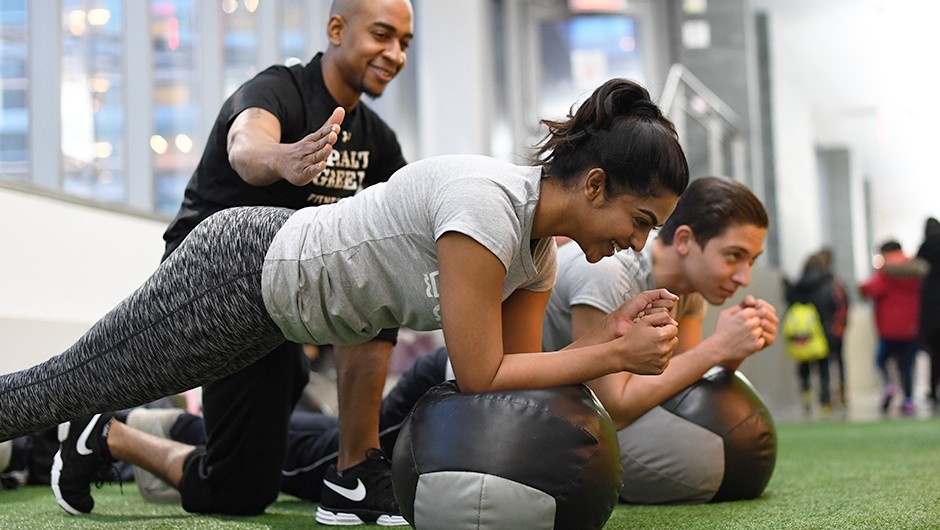Yes, it is safe and beneficial for kids and teens to strength train. The American Academy of Pediatrics recommends strength training for kids ages 8 and older as a safe and effective way to reduce injuries in sports and improve performance.
Asphalt Green personal trainer and youth fitness specialist Sam Circh says many parents are concerned lifting weights will stunt growth, but the rumor is not true. Strength training at a young age will help teens develop safe movement patterns that they will use for their entire lives. However, it is important to take into account that teens’ bodies are growing and their muscles are changing. A 13-year-olds’ strength training routine will look different than a 35-year-olds’ workout. Here are some fitness tips to ensure your teen exercises safely.
KNOW THE PURPOSE.
The purpose of fitness for teens is to develop a healthy relationship with exercise. Workouts should leave teens feeling energized and comfortable in their bodies.
“A good teen fitness program will focus on learning proper form, understanding major muscle groups, and identifying what movements are exercising which muscles in the body,” says Sam. “The goal is to help kids become in tune with their bodies and feel confident executing exercises on their own.”
LIFT WEIGHTS, BUT DON’T OVERDO IT.
Lifting weights is an integral part of a teen fitness program as long as it is done in a controlled environment.
Sam recommends lifting weights no more than twice per week. Often times, Sam cautions, kids model their weightlifting routine after their parents, but doing so could be dangerous.
“When making gains as an adult, you’re working to fatigue, making tiny tears in muscle fibers then refueling with protein to help muscles grow back,” he says. “With kids, it’s not appropriate to work to fatigue because their bodies are still developing. The focus should be on doing 10 or 12 reps comfortably.”
While the exercises may be the same for adults and kids, kids should not push to the point where they cannot do another rep.
FOCUS ON FORM.
Proper form prevents injuries. Developing good habits is easier than unlearning bad habits. If your teens’ first introduction to exercise focuses on proper form, the practice will likely stick with them for years to come.
Before beginning any exercise—squat, plank, deadlift, chest press—teens should scan their bodies from top to bottom. Looking straight ahead, shoulders should be rolled back, belly squeezed inward, and weight in their heels. The core needs to be engaged to protect the spine and back.
Teens need to be conscious of their breath as they perform each exercise. When doing a squat, for example, breathe in on the way down and out on the way up. A way to remember the rhythm is to breathe out during the hard parts of the exercise. Additionally, always breathe in through the nose. Breathing in through the mouth puts the body into fight or flight, which elevates heart rate more than necessary.
CONSIDER JOINING A TEEN FITNESS GROUP.
“Kids motivate each other in a group,” Sam says. “Friendly competition lights a little fire in kids. Group dynamics is a good primer for developing sportsmanship.”
In a group setting, you have the opportunity to incorporate games into the workout. It makes fitness fun.
Sam Circh runs Asphalt Green’s youth fitness programs. Want your child to get involved? Learn more and register today.

